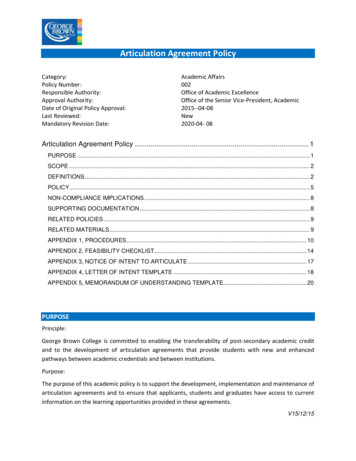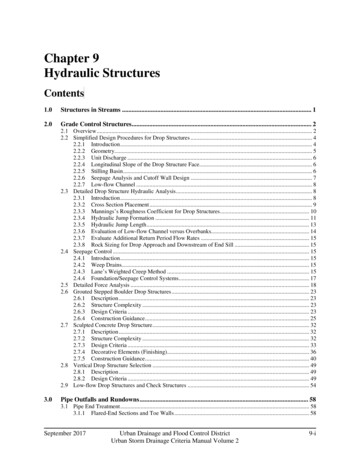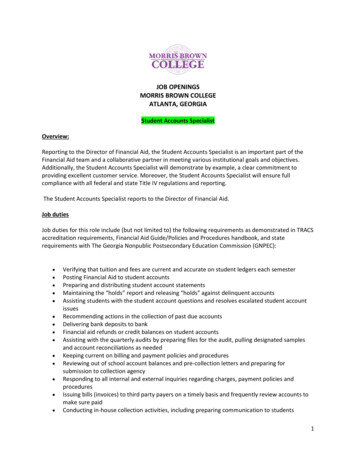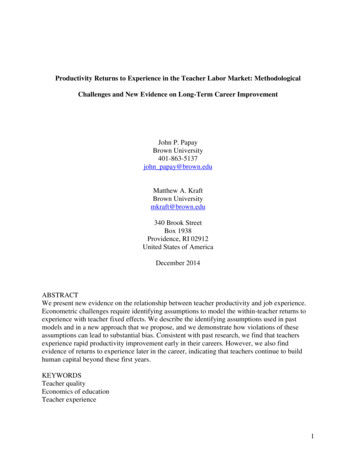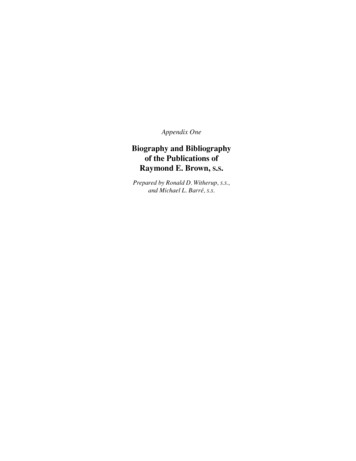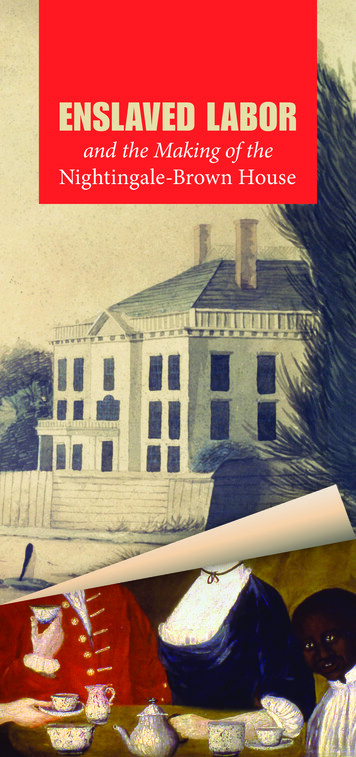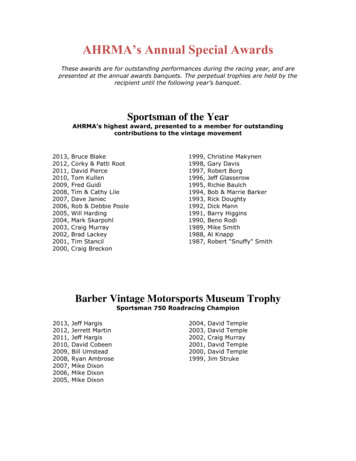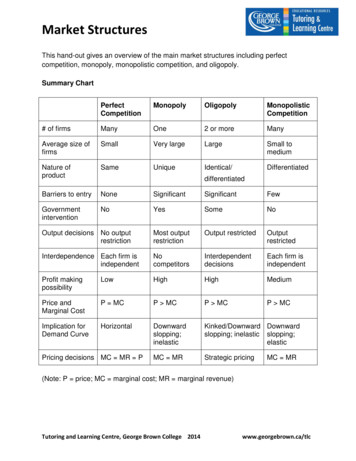
Transcription
Market StructuresThis hand-out gives an overview of the main market structures including perfectcompetition, monopoly, monopolistic competition, and oligopoly.Summary icCompetition# of firmsManyOne2 or moreManyAverage size offirmsSmallVery largeLargeSmall tomediumNature s to entionNoYesSomeNoOutput decisions No outputrestrictionMost outputrestrictionOutput restrictedOutputrestrictedInterdependence Each firm ach firm isindependentProfit makingpossibilityLowHighHighMediumPrice andMarginal CostP MCP MCP MCP MCImplication forDemand wnward Downwardslopping; inelastic slopping;elasticMC MRStrategic pricingdifferentiatedPricing decisions MC MR PMC MR(Note: P price; MC marginal cost; MR marginal revenue)Tutoring and Learning Centre, George Brown College 2014www.georgebrown.ca/tlc
Perfect CompetitionPerfect competition is a market in which:- There is generally a large number of buyers and sellers.- Buyers and sellers sell identical products (there is no need for advertising).- Each buyer and seller acts independently.- Sellers and buyers are reasonably well-informed about products and prices.- Competitors are free to enter into the market, conduct business or leave themarket.- Examples: local vegetable farmers, dry cleaning businesses, grocery retailers,plumbing, etc.Perfect competition markets are highly competitive markets in which many sellers arecompeting to sell their product. Each seller produces a product that has no uniquecharacteristics so buyers “don’t care” about which seller’s product to buy.Other notes:- Firms cannot influence the market price because the individual firm’s productionis an insignificant part of the total market. Firms are “price-takers.”- Market demand and market supply determine the market price and quantity.- The demand for a firm’s product is perfectly elastic (i.e. one firm’s product is aperfect substitute for another firm’s product).- In perfect competition, the firm’s marginal revenue equals the market price.- If MR MC, economic profit is maximized.Tutoring and Learning Centre, George Brown College 2014www.georgebrown.ca/tlc
MonopolyMonopoly is a market in which:- there is one seller of a particular product- there are barriers to entry of the market to prevent competition- Examples: Toronto Hydro (has monopoly over electric services in the GTA);LCBO (has monopoly over alcohol sales in Ontario).Types of Monopolies1. Natural Monopoly – market situation where the costs of production areminimized by having a single firm produce the product (e.g. public utilitycompanies, oil pipeline in Alaska)2. Geographic Monopoly – based on absence of other sellers in a certaingeographic area (e.g. gas station or drugstore in small town)3. Technological Monopoly – based on ownership or control of a manufacturingmethod, process or other scientific advance (e.g. certain pharmaceutical drugs)a. Patent – exclusive right to manufacture, use or sell invention (usuallygood for 20 years).b. Copyright – authors, art (good for their lifetime plus 50 years)4. Government Monopoly - monopoly owned and operated by the government(e.g. military, water and sewage)A monopoly maximizes profit by producing output when MR MC and by chargingmaximum price that consumers are willing to pay for that output.Tutoring and Learning Centre, George Brown College 2014www.georgebrown.ca/tlc
Monopolistic CompetitionMonopolistic competition is a market in which:-A large number of firms compete.Each firm produces a differentiated product.Firms compete on product quality, price and marketing.Firms are free to enter and exit the industry.Other notes:- All conditions of perfect competition are met except products are NOT identical.- Product differentiation – real or perceived differences between competingproducts in same industry (e.g. Pure life Water vs. Dasani Water, Cresttoothpaste vs. Colgate).- Nonprice competition – use of advertising, giveaways, or other promotionsdesigned to convince buyers that a product is unique (e.g. Coke vs. Pepsi).-Profit is maximized by producing output when MC MR.Tutoring and Learning Centre, George Brown College 2014www.georgebrown.ca/tlc
OligopolyOligopoly is a market in which:-Few very large sellers dominate the industry and compete with one another.Examples: Burger King, McDonald’s and Wendy’s.When one firm acts, the others tend to follow (e.g. selling chicken nuggets)Firms are “price-makers.”Other notes:- Collusion is formal agreement between sellers to set specific prices or tootherwise behave in a cooperative manner (For example, OPEC Organization ofthe Petroleum Exporting Countries).- Price-fixing is a form of collusion where firms establish the price of a product orservice, rather than allowing it to be determined naturally through free marketforces.- The demand curve below is kinked. At higher prices the demand is elasticbecause if you raise your price, other firms will not match it. At lower prices, thedemand curve becomes inelastic; if you lower your price, other firms will match it.Tutoring and Learning Centre, George Brown College 2014www.georgebrown.ca/tlc
- Market demand and market supply determine the market price and quantity. - The demand for a firm's product is perfectly elastic (i.e. one firm's product is a perfect substitute for another firm's product). -In perfect competition, the firm's marginal revenue equals the market price. -If MR MC, economic profit is maximized.
